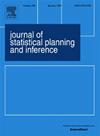尺度参数趋于零的最大熵标准回归模型
IF 0.8
4区 数学
Q3 STATISTICS & PROBABILITY
引用次数: 0
摘要
最大熵准则回归(MCCR)模型在尺度参数取固定值或无穷大时的统计学习理论框架内得到了很好的研究。本文研究了尺度参数趋于零的 MCCR 模型。研究发现,当样本量 n 变为无穷大时,MCCR 模型的最优学习率在渐近意义上为 O(n-1)。在有限样本的情况下,比较了 MCCR、Huber 和最小平方回归模型的性能和鲁棒性。同时还展示了这三种方法在实际数据中的应用。本文章由计算机程序翻译,如有差异,请以英文原文为准。
Maximum correntropy criterion regression models with tending-to-zero scale parameters
Maximum correntropy criterion regression (MCCR) models have been well studied within the theoretical framework of statistical learning when the scale parameters take fixed values or go to infinity. This paper studies MCCR models with tending-to-zero scale parameters. It is revealed that the optimal learning rate of MCCR models is in the asymptotic sense when the sample size goes to infinity. In the case of finite samples, the performance and robustness of MCCR, Huber and the least square regression models are compared. The applications of these three methods to real data are also demonstrated.
求助全文
通过发布文献求助,成功后即可免费获取论文全文。
去求助
来源期刊
CiteScore
2.10
自引率
11.10%
发文量
78
审稿时长
3-6 weeks
期刊介绍:
The Journal of Statistical Planning and Inference offers itself as a multifaceted and all-inclusive bridge between classical aspects of statistics and probability, and the emerging interdisciplinary aspects that have a potential of revolutionizing the subject. While we maintain our traditional strength in statistical inference, design, classical probability, and large sample methods, we also have a far more inclusive and broadened scope to keep up with the new problems that confront us as statisticians, mathematicians, and scientists.
We publish high quality articles in all branches of statistics, probability, discrete mathematics, machine learning, and bioinformatics. We also especially welcome well written and up to date review articles on fundamental themes of statistics, probability, machine learning, and general biostatistics. Thoughtful letters to the editors, interesting problems in need of a solution, and short notes carrying an element of elegance or beauty are equally welcome.

 求助内容:
求助内容: 应助结果提醒方式:
应助结果提醒方式:


